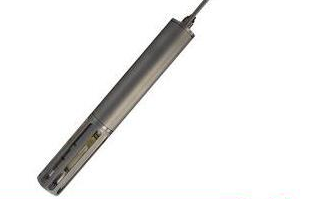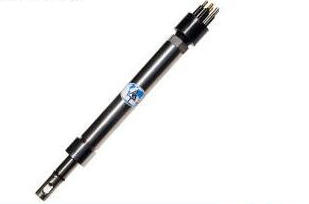How does the water quality sensor used in aquaculture parameter detection work?
The aquaculture industry is the key target of China's development whether it is in the inland or the coastal generation. Aquaculture itself requires very strict requirements for various parameters in the water. In addition, it is difficult to monitor the substances in the water, so at this stage Freshwater fish farming has increasingly higher requirements for aquaculture monitoring system.
The general water quality of aquaculture measures dissolved oxygen, salinity, CO2, ammonia nitrogen and other data. In a high-density circulating aquaculture system, dissolved oxygen is the most terrible indicator. Dissolved oxygen can drop from high dissolved oxygen to deadly low concentration like a roller coaster in a short time. Apart from dissolved oxygen, there is no water quality parameter that can kill fish in a short time.
Therefore, continuous and uninterrupted dissolved oxygen monitoring is very critical. In addition, it is best to have emergency oxygenation equipment and emergency backup power to ensure that it can cope with all situations. Salinity is very important. The salinity of water in general fishing grounds is constant. Of course, the salinity of some fisheries during nursery and breeding will be different, so the salinity determination is obviously necessary.
The second is the optical salinity meter. This is really accurate. When used, it is like a pirate captain. The bunker is ready. You need to check it before using it and pay attention to temperature changes. Then there is the conductivity probe. Needless to say, this is the most accurate , Direct reading.
Aquaculture generally monitors four indicators of temperature, pH, dissolved oxygen, and transparency. Fish pond water quality management directly affects the efficiency of fish farming. The main indicators to measure the quality of the fish pond are: pond water temperature, pH value, dissolved oxygen value and transparency.
The test technology is introduced as follows:
Different fish have different requirements for water temperature. Silver carp, bighead carp, grass, carp, and bream are warm-water fishes, and the water temperature suitable for life is 20℃~30℃. Tilapia is a tropical fish, and the suitable water temperature is 25℃~34℃. In order to create the most suitable temperature environment for the fish, it is necessary to keep abreast of the temperature changes of the pool water. The most commonly used to monitor water temperature is a mercury thermometer, but only the surface water temperature can be measured. Both the water quality analyzer and the dissolved oxygen tester have a water temperature test function, and can measure the water temperature of different water layers.
PH test:
The pH value of the pond water not only affects the growth and life of fish, but also affects the nutrients in the pond water. Therefore, people often use lime to adjust the pH value of the fish pond water. For warm-water fish such as silver carp, bighead carp, grass, common carp, and bream, it prefers alkaline water, and its suitable pH value is 7.5 to 8.5.
The simplest and most reliable method to determine the pH of pool water is to use litmus paper. During the measurement, immerse a piece of test paper in the water for 2 to 3 minutes and then take it out, and compare it with the pH chromatogram. Find the section with the same color as the test paper to know the pH of the pool water.
Dissolved oxygen value test:
The suitable dissolved oxygen value for general fish is more than 3 mg/L. When the dissolved oxygen value in water is less than 3 mg/L, the fish stop eating and growing; when the dissolved oxygen value is less than 2 mg/L, the fish will float; Begin to die at 6~0.8 mg/L. In the past, most of the dissolved oxygen values were tested by chemical methods, that is, the sulfonation method. Although this method has high accuracy, it is troublesome and difficult, and it is difficult for ordinary fish farmers to grasp. In recent years, many electronic instruments for measuring dissolved oxygen values have been put on the market, such as water quality analyzers and dissolved oxygen testers. These instruments have a dedicated probe. Just put the probe in the water and set the switch to the oxygen measurement position. After about 1 to 2 minutes, the pointer on the meter head will indicate the dissolved oxygen value in the water.
Transparency test:
The so-called transparency is the degree to which sunlight penetrates into the water. Transparency is directly related to the color of the water, and the color of the water marks the leanness of the water and the amount of plankton in the water.
To determine the transparency, you can make a black and white disc by yourself: cut a disc with a diameter of 20 cm from a thin iron sheet, punch a small hole in the center of the disc with an iron nail, and paint the disc in black and white with black and white paint , Thread a string in the center of the disc and mark the ascent on the rope. Immerse the black and white disc in the fish pond water until the plane of the disc is just out of sight. At this time, the marked value of the length of the rope on the water surface is the transparency of the pond water. If the transparency is greater than 35 cm, it means that the pond water is too thin and should be topdressed, and more feed can be added; if the transparency is less than 25 cm, it means that the pond water is too fat, so feed less and add new water.

Two water quality sensors are recommended for use in the detection of aquaculture parameters. The first is the water quality sensor-H2S. The measurement of completely dissolved sulfides (dissolved H2S, HS and S2) is the most important parameter for analyzing natural water and wastewater in the industry. one. Due to the evaporation of toxic H2S, in order to avoid any danger, the concentration of sulfide dissolved in water must be observed to avoid any danger. H2S can prevent the death of oxygen transport enzymes due to internal focusing. On the other hand, the fully dissolved sulfide concentration is a very interesting parameter for scientists in several scientific departments. They use this parameter to evaluate natural lakes, but it can also be used to understand volcanic activity.

The last is the hydrogen sulfide sensor-H2S sensor. The H2S sensor is based on the electrochemical amperometric principle, which can quickly analyze the dissolved hydrogen sulfide (H2S)/sulfide in natural water on site. The H2S gas diffuses into the sensor through the gas-permeable membrane, and then redox reaction occurs on the surface of the working electrode in the sensor. Quantitative analysis is performed by recording the current signal related to the H2S content. When measuring H2S/sulfide concentration (pH 5-8.5), it is necessary to measure the pH value and temperature value of the sample at the same time, and compensate the output signal of the sensor through the electronic device, so that the measured value can be corrected with the temperature change (temperature make up). The sensor can be used for measuring on-site water depth up to 100 meters, and can also be used for laboratory testing.
This article is from Allicdata Electronics Limited which offer electronic components, semiconductors, antennas, capacitors, connectors, diodes, transistors, IC,resistors. For more product information, please go to the website to get it.

